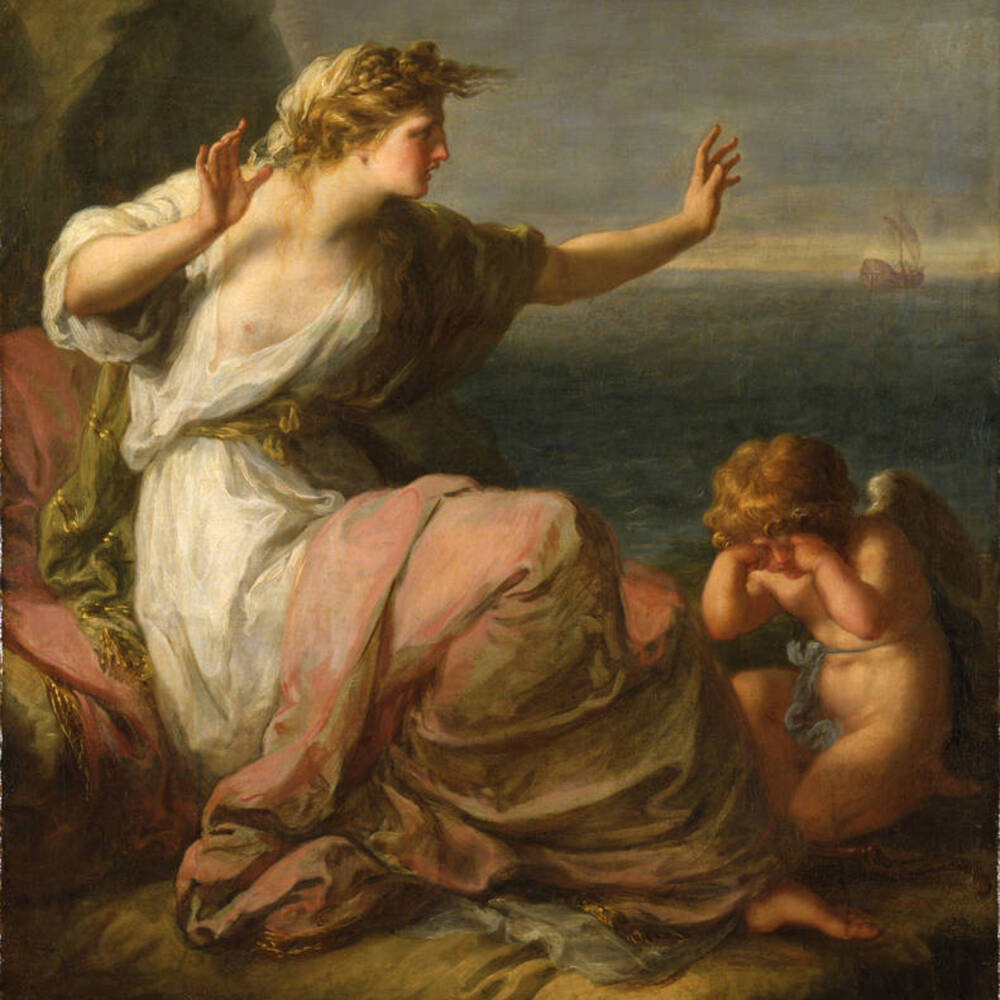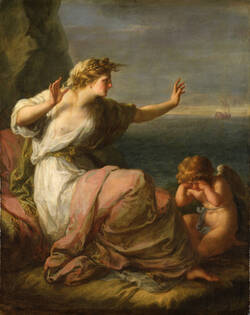Princess Ariadne helped Theseus to escape from the labyrinth by means of her now proverbial thread. He promised to marry her but left her behind on the island of Naxos. In her history paintings, Kauffman repeatedly dealt with this myth: she selects the most hopeless moment in the story, when there is no hope of any alleviation of Ariadne’s pain. Abandoned by the man she loves, she is depicted as a victim of her powerful emotions, so that her image serves as an indictment of inhumanity.
Further Media
Ariadne and Theseus are one of the tragic pairs of lovers in classical mythology. While most of these stories end in betrayal and drama, Ariadne can actually look forward to a happy ending – and the rare privilege, as a mortal, of being taken to join the immortals on Mount Olympus.
Ariadne is the daughter of King Minos of Crete. She helps the Greek hero Theseus kill the blood-thirsty Minotaur – her half-brother, the result of her mother’s affair with a white bull. The Minotaur, a composite being with the body of a man and the head of a bull, is kept in a labyrinth. When Theseus arrives in Crete, Ariadne falls in love with him at first sight. Theseus is there to kill the Minotaur – and Ariadne agrees to help him. She gives Theseus a long thread so he can find his way back out of the labyrinth once the monster is dead. Afterwards, Theseus and Ariadne flee to Athens. In return for her help, Theseus promises to marry Ariadne, but instead he leaves her behind on the island of Naxos and returns home alone. Abandoned on the shore, Ariadne knows she could never return to her family after betraying them. Desperate and despairing, she decides to end her life. But she is found by Dionysus, the god of wine, who is enraptured by her beauty and marries her. They have three children and when Ariadne dies, Dionysus takes her up to join the gods on Mount Olympus.
- Location & Dating
- before 1782
- Material & Technique
- Oil on canvas
- Dimenions
- 88 x 70,5 cm
- Museum
- Gemäldegalerie Alte Meister
- Inventory number
- Gal.-Nr. 2183

